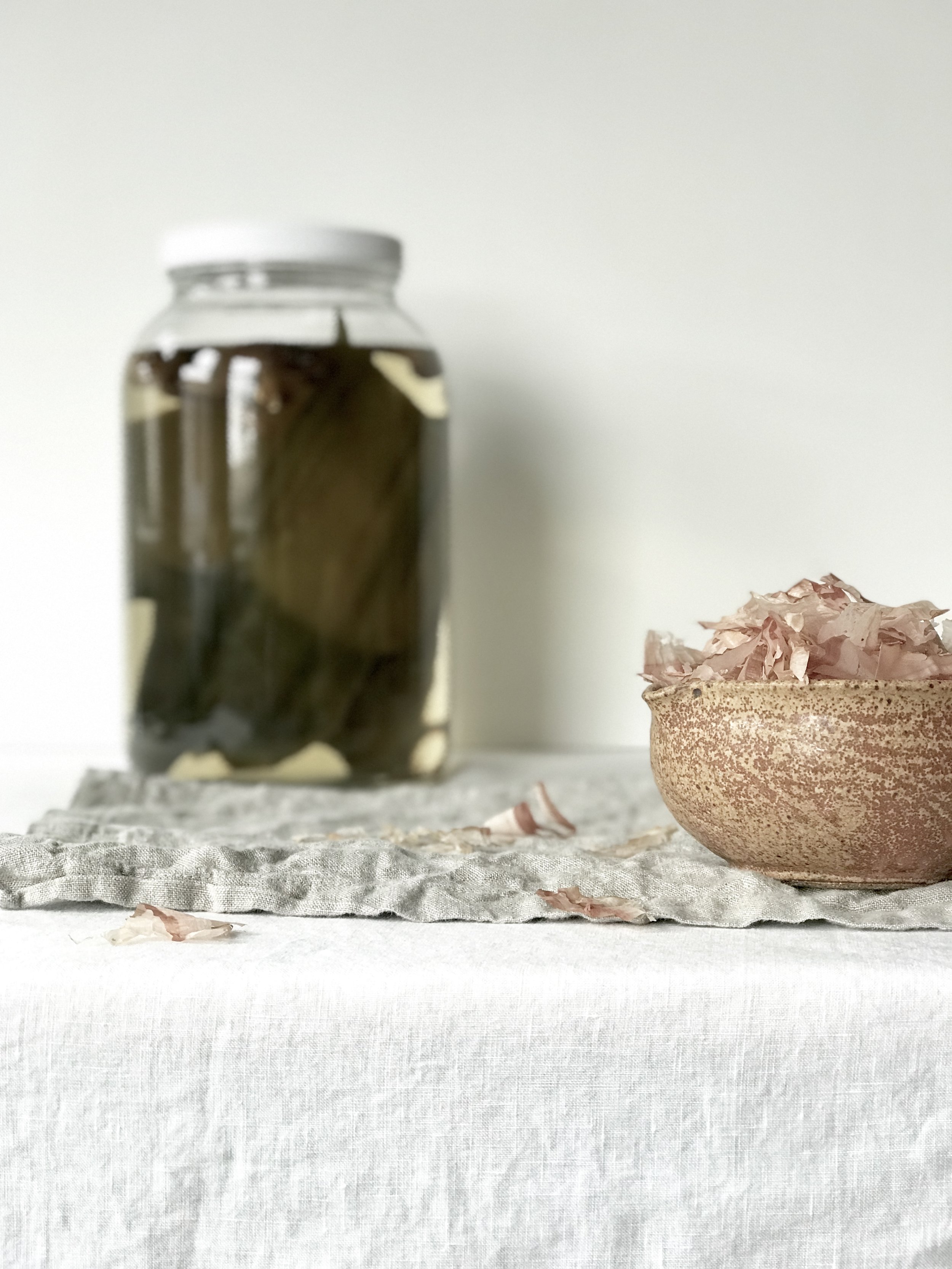Ichiban Dashi
Have you ever tried to make a Japanese dish (like miso soup) and found that the flavor just fell kind of... Flat? Most likely, the dish was missing a layer of umami. This layer is often created with the addition of dashi, a soup stock made of dried shiitake mushrooms, seaweed and fish flakes. Dashi is the foundation, the most important first layer of Japanese cooking...
Like most of my other Japanese and Japanese American friends whose parents both worked long hours, I grew up on the convenient powdered stuff... Which is laden with MSG. It wasn't until I was an adult that I realized that it was a powdered version of something you could make from scratch. But even then, I assumed it was a long and arduous process.
When I lived in Japan, I visited my Aunt in Hiroshima often. She always had a large jar of homemade dashi sitting in her refrigerator (or outside if it was fall or winter). She would make a batch every few days and ladle a little bit out during the week into each of the meals she made. I happened to be there on a day when she made it and I was completely shocked and blown away at how easy it was. For years, I thought it was something only really good Japanese chefs made.
My Aunt is very Japanese and modest, so she insists she's not a good cook. She just does what she's learned from the women around her over the years. But that dashi made all the difference in her food. Her cooking is a treat- I'd eat in her kitchen over a nice restaurant in Japan any day. So I asked her how to make it and now I'd like to share it with you. I hope making and serving it will bring you as much joy and comfort as it brings me. It will bring that extra special layer of umami to your Japanese food in a way only homemade dashi can.
ICHIBAN DASHI 一番だし STOCK
- 4 cups filtered water
- 2 x 6" pieces of kombu こんぶ seaweed (dried kelp)
- 4 medium-sized dried shiitake mushrooms
- 2 cups (not packed) katsuobushi 鰹節 (dried bonito fish flakes)
- Place water, shiitake and kombu in a large jar and place it in the refrigerator overnight or for at least 24 hours. You will essentially cold brew it. You can also just put it in a pot and bring it to a boil immediately without cold-brewing, if you forget to soak it or don't have time. I prefer the cold brew method because I think it coaxes out the flavors more gently, and its what my Aunt in Hiroshima does.
- Pour everything into a large soup pot and bring it to a boil. Turn off the heat as soon as it comes to a boil.
- Toss in the katsuobushi and let it stand until all the flakes have sunk to the bottom (about 8-10 minutes).
- Line a colander with a clean cheesecloth or thin kitchen towel and strain the solids from the liquids. Dashi can be kept in the fridge for 2-3 days.
Pro Tips:
You can purchase these ingredients at any Japanese market near you. I've noticed Whole Foods and other health food stores have begun selling kombu and katsuobushi, but I have not tried making dashi with the ones they sell there.
I like the shiitake that Far West Funghi sells, but you can also find this at a Japanese market. Be sure to check to make sure it's from Japan.
This dashi stock can be used as the base for miso soup, udon or soba soup, okayu お粥 (rice porridge), ochazuke お茶漬け, and can even be used in place of chicken stock in soups for a lighter and more nuanced flavor.
You can make another batch of dashi (niban dashi 二番だし) by boiling everything again with the same amount of water for 3-4 minutes and strain.
Check out JustOneCookbook's recipe for homemade furikake (rice topping). I make this often to ensure the dashi ingredients don't go to waste when I'm done making dashi.
To make it vegetarian, just omit the katsuobushi (fish flakes).
Head here to visit our Modern Heirlooms web shop, where I've thoughtfully co-created ritual objects with my favorite artisans (in limited runs) to help you elevate your sacred rituals.
I truly believe that cuisine is the most accessible gateway into learning more about our rich heritages. In addition to food, there are so many ways to celebrate, honor, and even reclaim, our time-honored traditions. I believe ritual objects really help anchor us in these moments-- especially around the table.



